Thank you for subscribing to Kizuna Box!
The theme of this February box is “Risshun” (Early Spring).
What is “Risshun” of this month’s theme?
“Risshun” is the first of the twenty-four seasons in the Japanese lunar calendar.
It means the time to feel the signs of spring. However, it is still cold in the early spring of Japan.
In this early spring season, Japan is preparing for spring.
The first event is “Setsubun”.
“Setsubun” is a traditional event held on February 3 (The day before “Risshun”).
On this day, there will be “Setsubun” events all over Japan.
This phrase “Oni wa soto, Fuku wa uchi” is the Setsubun’s keyword, all Japanese know it.
The phrase means “we hope bad luck goes out, good luck comes in.”
Old days in Japan, spring was very important, because they thought the “Spring” is “New Year”.
So, they thought of expelling the demons from their houses, before new “Spring”.
By doing this “Setsubun” event, they wanted to get rid of the “bad luck” that was called “Yaku” in me and start a new spring.
And that habit continues today.
And, March 3 is “Hinamatsuri”.
“Hina-ningyo” (Hina dolls) are indispensable for the Hinamatsuri (doll festival).
It is said that the best time to start to decorate the “Hina-ningyo” (Hina dolls) is from “Risshun” (the day after “Setsubun”, around February 4) to mid-February.
And there is a habit of “put “Hina-ningyo” (Hina dolls) away immediately after “Hinamatsuri” day (March 3)”.
After all, “Risshun” is important.
The Lifestyle Box
1. Shell-shaped peach pattern plate (1 item)
We often eat “Hamaguri”(clam) in “Hinamatsuri”.
Please enjoy the atmosphere of “Hinamatsuri” on a plate with a peach flower pattern in the shape of a shell.
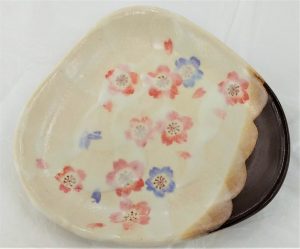
2. Light snowfall “Yunomi” Japanese tea cup (1 item)
This cup is the image of a flower blooming in the melting snow in early spring.
It is vertically long and easy to use.
3. “Hina-ningyo” (Hina doll) soil bell (1 item)
This “Hina ningyo” (Hina doll) soil bell is easy to decorate anywhere.
“Hina ningyo” is decorated to pray for the healthy growth of the girl and the long-lasting happiness.
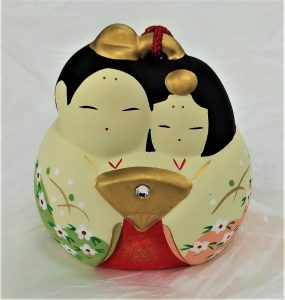
4. Pale pink heart-shaped plate (1 item)
A plate with cute heart shape is a versatile use.
The pale pink color is just the dessert plate for early spring!
5. Setsubun-mame (3p / 1item)
“Setsubun-mame” beans (from Hokkaido) are contained in a triangular bag.
This “Setsubun-mame” was prayed for good luck at “Nison-in” Temple in Kyoto.
6. Nara Kayakiji fabric cloth (1 item)
It is a towel made of mosquito nets fabric that takes advantage of the tradition of making mosquito nets in Nara.
This design is “Ume” (plum blossom).
7. “Ikkon-zome” colored Washi Note pad (1 item)
This note is made from Iyo (Ehime Pref.) Washi.
“Ikkon-Zome” is one of the traditional Japanese colors that is somewhat pale red.
This note pad makes taking notes and writing messages all the more fun!
8.Seasonal cat post card (1 item)
It is a postcard imaged by “Kanbai” (the viewing of plum blossom).
What do you try to decorate for each season?
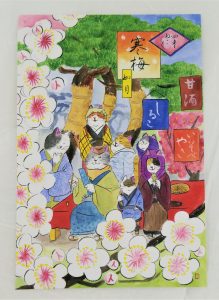
9. Ginger and “yuzu” tea(2p)
Containing ginger and “Yuzu” (Japanese citron).
This drink will warm the cold body.
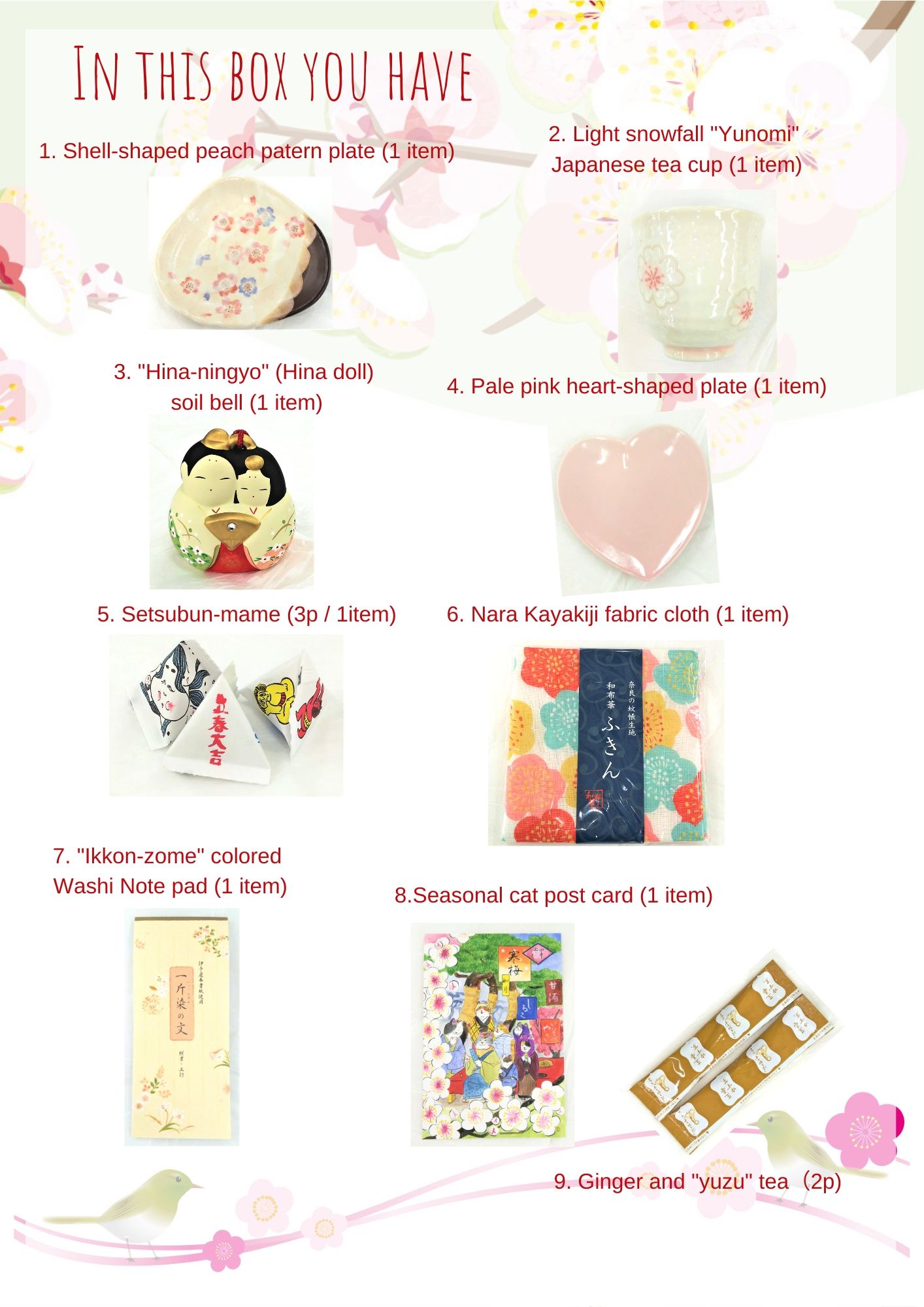
The number of items: 12.
The SNACK Box
1. Valentine round heart Chocolate (1P)
In Japan, Valentine’s Day on February 14 is a day of giving chocolates to loved ones.
Therefore, We will give you heart-shaped chocolate like cute petals.
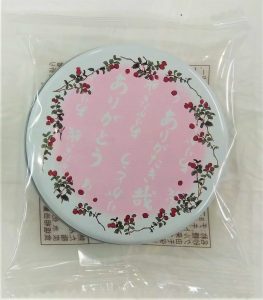
2. “Hina arare” rice crackers (4P)
It is the four colored crispy rice cracker. It is using 100% glutinous rice produced in Toyama Pref.
These four colors are expressed to “Four seasons in Japan”.
3. Meiji Apollo Chocolate Rich taste (1P)
In Japan, winter is the strawberry season.
You can enjoy rich strawberry flavor chocolate.
4.”Arihei-to” candy “Kinako” flavor (6P)
It is a candy with a crunchy texture.
“Arihei-to” is said that it was transmitted from Portugal in the middle of the 16th century (Azuchi-Momoyama era)
and was eaten by the upper class of the time.
5. “Amazake” soft candy (1P)
“Hinamatsuri” is celebrated with non-alcoholic “Amazake” that children can drink.
The raw material for the “Amazake” is mainly “Sake-kasu” or “Koji” (malted rice).
This candy uses the “Sake-kasu” from Hokkaido. Please enjoy it!
* “Sake-kasu” is leftovers from Japanese sake production.
6. “Hinamatsuri” paper stickers (1item)
Decorate your journal and postcards with these adorable symbols of “Hina-matsuri”!
7. “Oni” Rice cracker(3p)
“Soy sauce, sesame, Zarame sugar, Chili pepper” ]was applied to the surface of the hard-baked rice cracker.
It is spicy, sweet, a little salted, and has a wonderful taste.
8. Fukumame (roasted soybean)(1p)
At the time of the “Setsubun”, we put the roasted beans into the “Masu” and prepare.
This item is roasted soybeans in Kyushu in a small bag, that set in a small “Kami-masu” paper box.
You can enjoy the atmosphere of “Setsubun”.
9. Calbee Jagariko “Koume” plum flavor(1p)
You can enjoy a crispy and comfortable texture.
This Jagariko is the taste of a plum (Ume).

10. Usuyaki Gourmet Shiso-chirimen taste (1p)
In addition to the moderate sourness and aroma of Japanese red perilla, the taste of “Chirimennjyako” (small fish) is irresistible!
It is a perfect dish for snacks.
11. Ninja meshi “Ume katsuo” flavor (1p)
A ninja-style gummi candy that fills a little hungry by biting an excellent hard gummi candy when you are hungry.
“Ume katsuo” (Plum bonito) flavor.
12. Ume mints (1p)
Classic candy! It is a nostalgic cute container plum (Ume) mints!
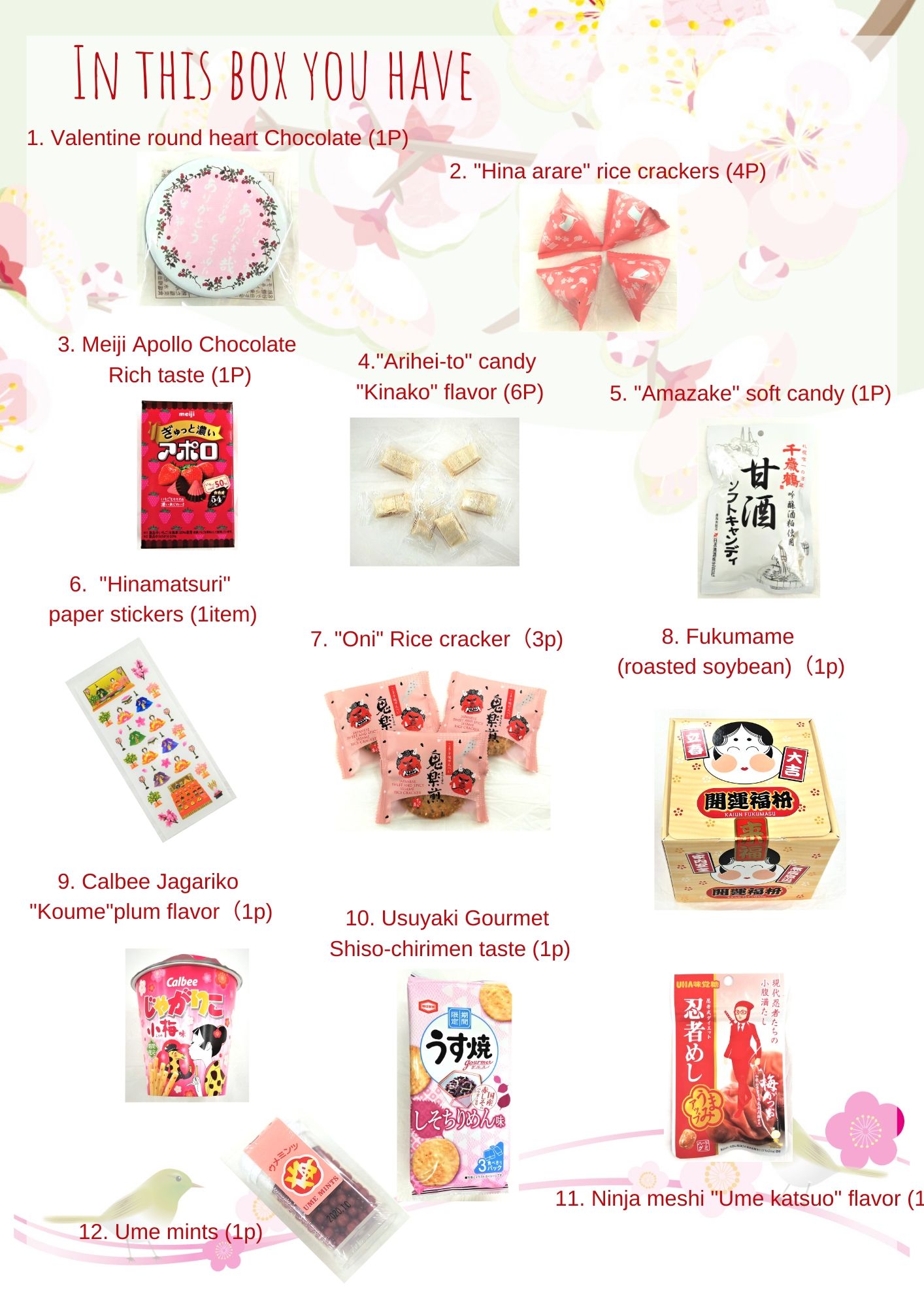
The number of items: 22.
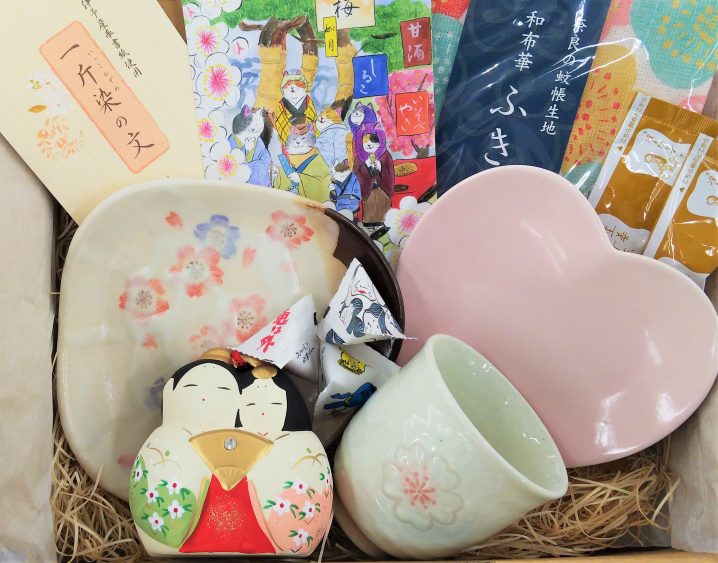
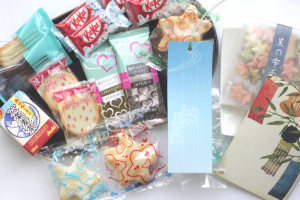
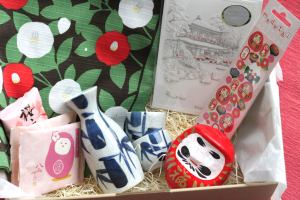
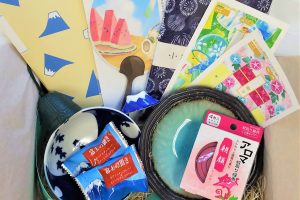
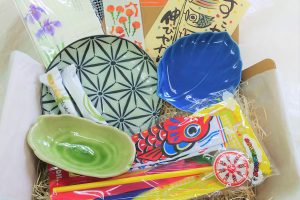
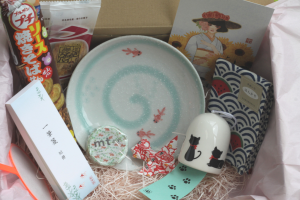
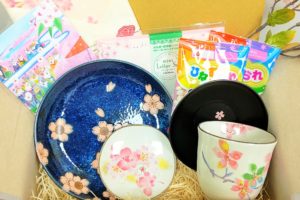
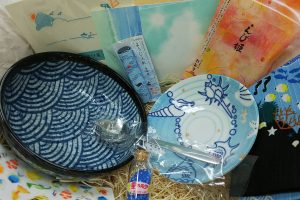
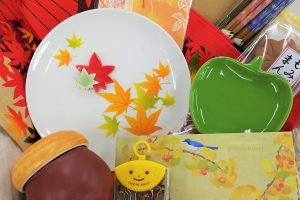
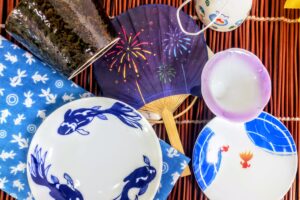

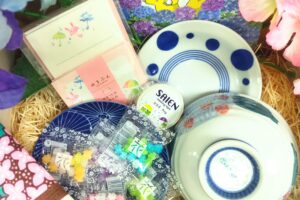
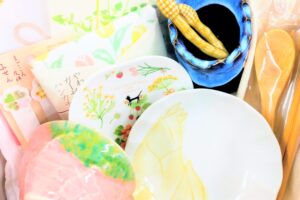
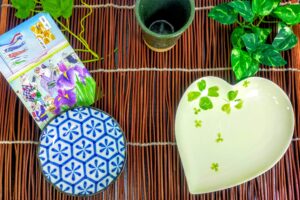
Recent Comments